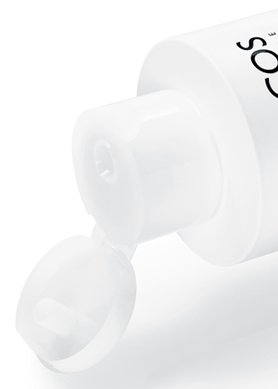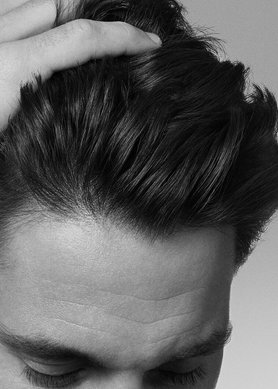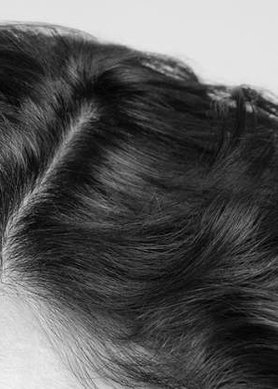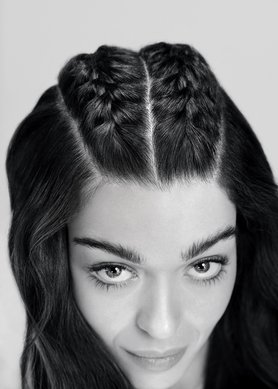When the colder months roll around, winter dandruff – usually triggered by colder air, lower humidity, and indoor heating that changes your scalp oil levels – can return. But, with quality scalp care, you can keep your scalp balanced and visibly flake-free throughout the season.
Read on to explore the causes of dandruff in winter and how to prevent dandruff with a variety of expert scalp care tips.
Is dandruff worse in winter?
It’s normal for dandruff to appear or increase during the colder months – and there’s a biological reason for it. Your scalp naturally produces an oil called sebum, which is broken down by yeast on your scalp. This process creates oleic acid – a compound that can cause flaking, resulting in an increase in visible dandruff in the winter.
Causes of dandruff in winter
Colder conditions can disrupt the natural balance of the scalp microbiome, leading to increased oil production, dryness, and sensitivity. One of the most common dandruff misconceptions is that flakes only come from dryness – but in winter, the temperature changes can actually encourage more dandruff to appear.
The following factors can cause dandruff during winter:
- Cooler temperatures: Cold weather can weaken your skin barrier and reduce hydration on the scalp.
- Lower humidity: Dry air depletes moisture from the scalp, making it more prone to flaking.
- Indoor heating: Prolonged exposure to heating systems can dry out your scalp, making dandruff more visible.
- Hotter showers: Extra-hot water removes protective oils from the scalp, resulting in additional sebum production.
- Less frequent hair washing: Fewer washes can lead to excess oil, dead skin cells and visible flakes.
- Beanies, scarves and hats: While they keep you warm, constantly wearing headwear can create a warm, humid environment that may disrupt the scalp microbiome.
Winter dandruff treatment: 6 tips
In winter, the balance of your scalp can fluctuate. That’s when a dedicated winter scalp routine can help manage dandruff – and support scalp comfort, balance and appearance.
Red on for six practical tips to manage winter dandruff effectively.
1. Switch to an anti-dandruff shampoo
When navigating winter and dandruff, using targeted anti-dandruff shampoo should be your first port of call.
Our 2-in-1 Anti-Dandruff Shampoo is formulated to visibly reduce the appearance of dandruff flakes and support scalp comfort. It’s scalp-nourishing properties come from selenium disulfide, an anti-yeast compound that helps improve your skin’s balance. The dual-action formula also has condition agents – such as hyaluronic acid – for added hydration, supporting your scalp and hair in one step.
2. Introduce an anti-dandruff scalp serum
After you’ve showered and your scalp is dry or damp, a leave-in serum will deliver support throughout the day. Using the Anti-Dandruff Scalp Serum between washes can support long-lasting scalp balance and to reinforce your skin moisture barrier – a crucial step for the cold, dry environments of winter. It’s formulated with salicylic acid and niacinamide to support the scalp surface and manage visible signs of dryness, redness, or flaking.
3. Maintain a consistent washing schedule to avoid scalp buildup
Even in winter, try to maintain – or at least stay close to – the same hair and scalp washing routine you had in warmer weather. Consistency is key. Regular washing helps remove visible dandruff flakes, support your scalp microbiome, and reduce confusion between dandruff vs dry scalp – two concerns that can often feel similar, but require different care.
Depending on your scalp characteristics, wash the following amount:
- Mild to moderate winter dandruff: wash two to three times per week.
- Visible flaking and oiliness: wash every two days.
- Very dry and uncomfortable: wash once or twice per week, using a hydrating anti-dandruff shampoo.
For more about how to get rid of scalp buildup, our in-depth expert guide will help.
4. Use a humidifier indoors
Constant indoor heating is one of the main causes of dandruff in the winter.
A humidifier helps to reintroduce moisture in your living space, supporting scalp hydration and comfort. Especially when paired with a quality scalp care routine – which could include targeted shampoo, conditioner, and serum – you give your scalp optimal opportunity to remain balanced throughout the colder months.
Damage from excessive heat styling is common, and it can disrupt your scalp’s microbiome. When this occurs, it can exacerbate oily dandruff and other scalp concerns as well as harming the surface of the hair shaft.3 To cultivate a healthy scalp and environment for hair growth, we suggest cutting back on your use of heat styling tools. When using a hair dryer, opt for gentle heat settings and hold the nozzle further away from your scalp to prevent direct heat. You might also opt for heatless hair styles such as braiding and claw clips or using heatless curlers to achieve your desired styles.
5. Wash your scalp in warm water – not hot
In winter, you’re more likely have hotter showers – and have them for longer. However, hot water can affect your scalp’s natural moisture barrier, increasing dryness and sensitivity. To preserve skin moisture, we recommend showering with warm water, and limiting the duration of your winter showers to under ten minutes.
If you have a sensitive scalp, our Anti-Dandruff Shampoo for Sensitive Scalp is infused with piroctone olamine – a key anti-dandruff ingredient– to visibly reduce dandruff flakes.
6. Limit your heat styling
Excessive heat from styling tools like blow dryers, straighteners and curling irons can remove moisture from your scalp – especially during winter, when your skin barrier is more vulnerable. This dryness can contribute to flaking and concerns around whether dandruff causes hair loss.
To help protect your scalp, try reducing how often you heat style each week. When possible, opt for air-drying or use the lowest heat setting. These small changes can support a more balanced scalp and reduce the appearance of winter dandruff.
Winter scalp care starts with consistent habits, gentle formulas, and a focus on comfort – and, with the right products and practices, you can keep your hair feeling its best through the cold season. Now, learn about one of the key ingredients in anti-dandruff care with our guide to the benefits of ceramides for your hair – all year round.







